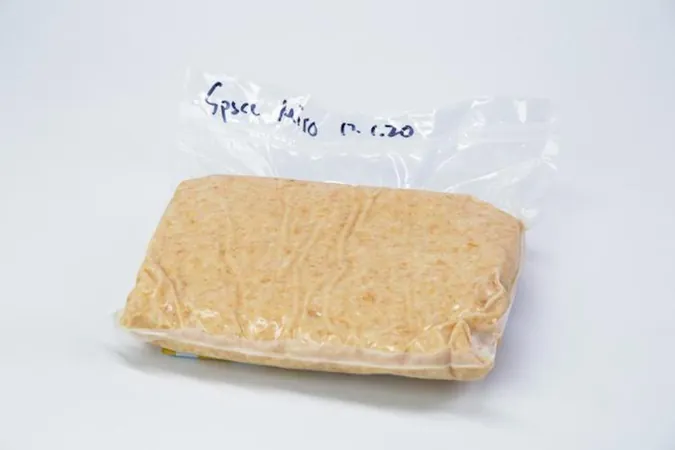
The Surprising Taste of Miso Fermented in Space: A Game Changer for Future Missions!
2025-04-06
Author: Rajesh
Forget the bland freeze-dried meals that astronauts have had to make do with for decades. In a groundbreaking experiment aboard the International Space Station (ISS), astronauts proved that they can whip up a delicious batch of miso, a traditional Japanese soybean paste, even in the challenges of microgravity. This discovery could transform the culinary landscape of space travel and change how astronauts experience food on long missions.
This isn't just good news for the taste buds of the ISS crew; it has profound implications for the future of space exploration. As humanity sets its sights on Mars and beyond, one of the main concerns is how to sustain astronauts with nutritious meals that go beyond basic survival rations. The ability to ferment ingredients like soybeans could elevate their diet, providing not only essential nutrients but also comfort through tasty food—essential for mental well-being during long space voyages.
The journey to creating space miso began in March 2020 when a team of international food scientists sent a carefully crafted mixture of soybeans, rice kōji, and salt to the ISS. Once it reached its destination, astronauts conducted an experiment to see if the ingredients would properly ferment in the unique conditions of space.
The choice of miso wasn't random; it was backed by science. The researchers noted the "diversity and uniqueness of miso microbial communities" in their publication in the journal *iScience*. Miso's firm structure minimizes the risk of leaks—critical in the tightly controlled environment of the ISS—while its short fermentation timeframe suited their experimental schedule. Plus, the rich flavors and nutritional benefits made it an ideal candidate for this space culinary adventure.
After a month in the cosmos, the fermented miso was carefully returned to Earth for analysis. Scientists checked the miso for harmful microbes and compared its chemical and microbial profile to that of Earth-made miso. Surprisingly, they found variations in microbial ratios, but concluded that it remained true to its miso identity.
"There are distinct factors in the space environment, such as microgravity and elevated radiation levels, that may influence microbial growth and metabolism during fermentation," stated Joshua D. Evans, a prominent researcher at the Technical University of Denmark's Novo Nordisk Foundation Center for Biosustainability. The team's interest lay in uncovering how these conditions could affect the fermentation process.
The burning question remained: what did space miso taste like? The researchers observed notable sensory differences. The ISS miso presented heightened "roasted" and "nutty" aromas, delivering a delightful twist to its flavor profile compared to its Earth counterpart.
This exciting development exemplifies the remarkable evolution of space food since John Glenn became the first human to eat in space back in 1962, partially consuming a tube of applesauce. Today, astronauts have enjoyed fresh greens like lettuce grown aboard the ISS, and efforts to innovate space cuisine have sparked competitions led by NASA.
While missions to Mars may still be on the horizon, finding effective ways to provide astronauts with nourishing meals in confined spacecraft is a pressing challenge that requires creativity and ingenuity. This delightful fermented miso could pave the way for a future where astronauts enjoy not just sustenance, but culinary delights that keep their spirits high as they journey into the great unknown!
Stay tuned as we discover even more breakthroughs in space food technology—who knows what tantalizing cross-galactic flavors await us!





 Brasil (PT)
Brasil (PT)
 Canada (EN)
Canada (EN)
 Chile (ES)
Chile (ES)
 Česko (CS)
Česko (CS)
 대한민국 (KO)
대한민국 (KO)
 España (ES)
España (ES)
 France (FR)
France (FR)
 Hong Kong (EN)
Hong Kong (EN)
 Italia (IT)
Italia (IT)
 日本 (JA)
日本 (JA)
 Magyarország (HU)
Magyarország (HU)
 Norge (NO)
Norge (NO)
 Polska (PL)
Polska (PL)
 Schweiz (DE)
Schweiz (DE)
 Singapore (EN)
Singapore (EN)
 Sverige (SV)
Sverige (SV)
 Suomi (FI)
Suomi (FI)
 Türkiye (TR)
Türkiye (TR)
 الإمارات العربية المتحدة (AR)
الإمارات العربية المتحدة (AR)